Our history
From our beginnings in the late 19th century we have grown to become the busiest emergency ambulance service in the world. This is our story.
-
The very beginning: horse-drawn ambulances
It may be hard to imagine today, but if you were injured in the 1890s, it was left to the police, firefighters and even taxi drivers to staff a fleet of wheeled stretchers, named ‘litters’, to take patients to the nearest hospital or doctor’s surgery.
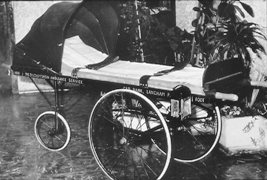
A full-time ambulance service wasn’t established until shortly before the turn of the 20th century. The Metropolitan Asylums Board ran just six ambulance stations, each adjoining the Board’s hospitals at Deptford, Fulham, Hampstead, Homerton, Stockwell, and Woolwich. Almost the whole of London fell within a three-mile radius of one of the stations.
Early on, the ambulance fleet was horse-drawn. The first petrol driven ambulance appeared in 1904 and could carry a single stretcher at up to 15mph.
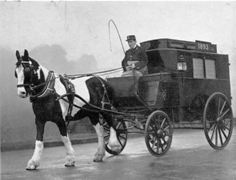 Major change came in 1930 when the Government announced proposals for the reorganisation of local government in England and Wales, including the transfer of responsibilities for the ambulance service to the county councils. So, on 1 April 1930, the Board’s duties and responsibilities passed to the London County Council, which also took over responsibility for all the hospitals.
Major change came in 1930 when the Government announced proposals for the reorganisation of local government in England and Wales, including the transfer of responsibilities for the ambulance service to the county councils. So, on 1 April 1930, the Board’s duties and responsibilities passed to the London County Council, which also took over responsibility for all the hospitals.As the Second World War approached, an auxillary ambulance service was set up as part of the Government’s civil defence service. Ennis Smith became a well-known figure for she was the youngest ambulance driver at the age of just 16. After the war, she joined London Ambulance Service.
-
Introducing the National Health Service
Post-war reorganisation led to the National Health Service Act of 1948. As part of this, for the first time, there was a requirement for ambulances to be available for all those who needed them.
By now, a more recognisable service was beginning to take shape. In the 1950s the London County Council’s ambulance service moved to Headquarters at Waterloo Road, but it was already clear this wouldn’t be large enough. By the early 1960s it was agreed a new headquarters would be built further up Waterloo Road. ‘Londam’, the Service’s newsletter, described it as ‘the promised land’.
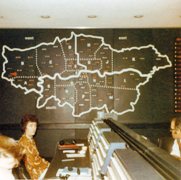 A London-wide service was created in 1965 when one ambulance service was formed in London from parts of nine existing services. It comprised nearly 1,000 vehicles and 2,500 staff.
A London-wide service was created in 1965 when one ambulance service was formed in London from parts of nine existing services. It comprised nearly 1,000 vehicles and 2,500 staff.In 1974, when the National Health Service was reorganised, the London Ambulance Service was transferred from the control of local government to the South West Thames Regional Health Authority.
In 1989 staff took part in a nationwide strike for better pay and working conditions. Every station was involved with many giving out the phone number of the stations so that the public could call the crews directly in case of emergency. After six months of not being paid and living on donations from the public, a pay deal was reached and the crews went back to work.
In 1992 the failure of a new computer system led to worldwide public and media interest. The crash of the computer-aided dispatch system led to long delays in dispatching ambulances.
Service managers continued to report to South West Thames until 1 April 1996, when the organisation became an NHS trust. London Ambulance Service as we know it today officially came into being.
-
A 21st century service
Just like the capital itself, we are continuing to grow and develop. The London Ambulance Service of today, and the skills and capabilities of our staff, bear little resemblance to the Service of even 20 years ago. We now have more than 8,000 staff and volunteers based at ambulance stations and support offices across London.
We continue to see a rise in demand for our service and each year received a record number of 999 calls.
Historically, we designed our service around a small number of our patients—those with life-threatening conditions. We are now turning our attention to our largest group of patients whose conditions, whilst not life-threatening, still need medical care. Many of these patients need different treatment to that offered by an A&E department. This could be treatment at home, referrals to a GP or social services, or treatment elsewhere at minor injuries units or walk-in centres.
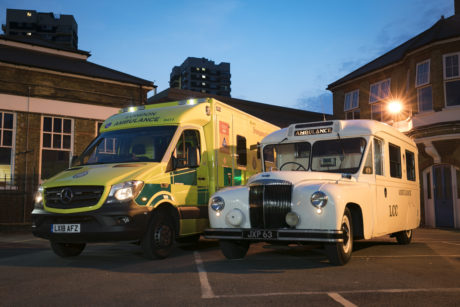
The way we respond to calls is changing too. Our staff now attend to patients in cars, and on motorbikes and bicycles, as well as in ambulances. This enables us to reach patients quicker in busy built-up areas. We are increasing public access to defibrillators—machines used to restart a patient’s heart when it has stopped beating—and are providing training in how to use this equipment, so that people in the community can provide life-saving treatment while ambulance staff make their way to a call.
We play a vital role in the London trauma system, taking patients with life-threatening injuries such as amputations and stab wounds to specialist centres for treatment.
-
Our historic vehicle collection
As one of the world’s oldest and largest ambulance services we have a unique, long and interesting history. This history is supported by a large collection of historical items which have been amassed over the years and which form the basis of our Historic Collection.
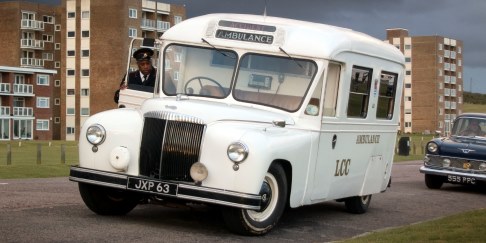
The collection includes plans, documents, books, equipment, badges, medals, uniforms and, most importantly, over 20 ambulances.
The ambulances in the collection range from early hand or horse-drawn carriages up to more modern vehicles from the 1980s and 1990s. Our collection holds an example of an ambulance that would have attended almost every major incident and emergency in London in the last 100 years.
Our collection is run and maintained largely by volunteers from within the London Ambulance Service, some of whom even used the vehicles and equipment when it was in service. The collection can provide not only a classic ambulance, but also an experienced member of staff in period dress, which creates a memorable attraction for any event.
Vehicles, uniforms and medical equipment are available for hire to the film and television industries as well as weddings and other public engagements.
For further information please contact:

Follow us on social media: